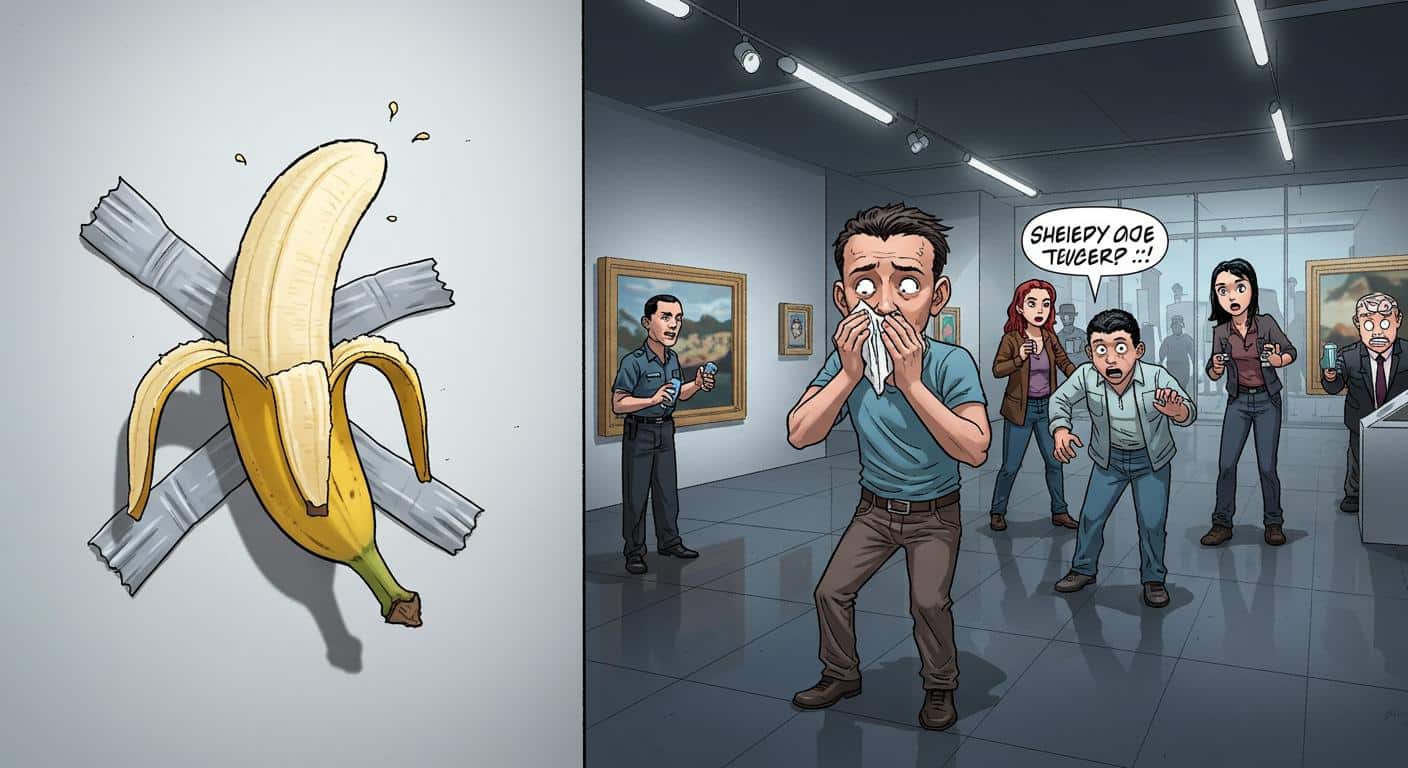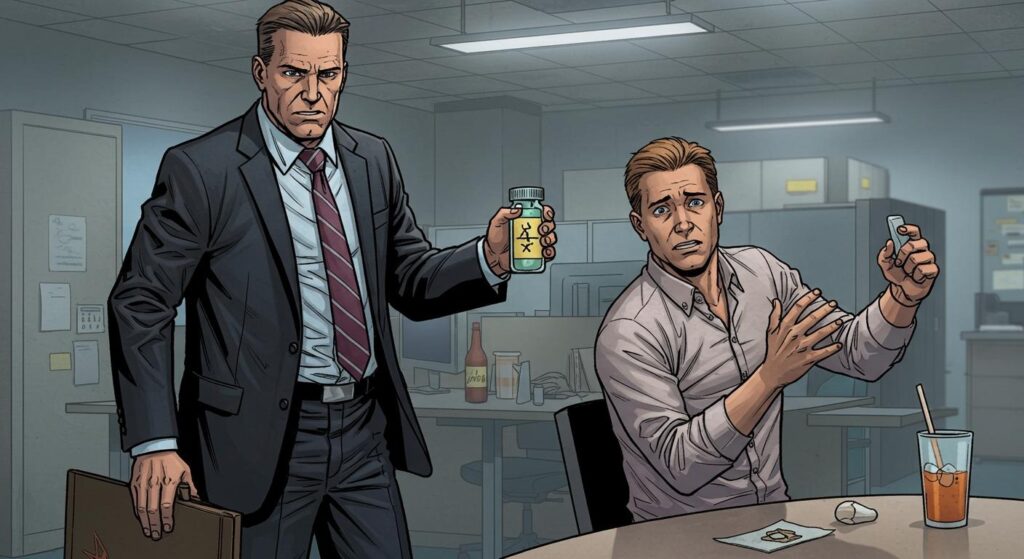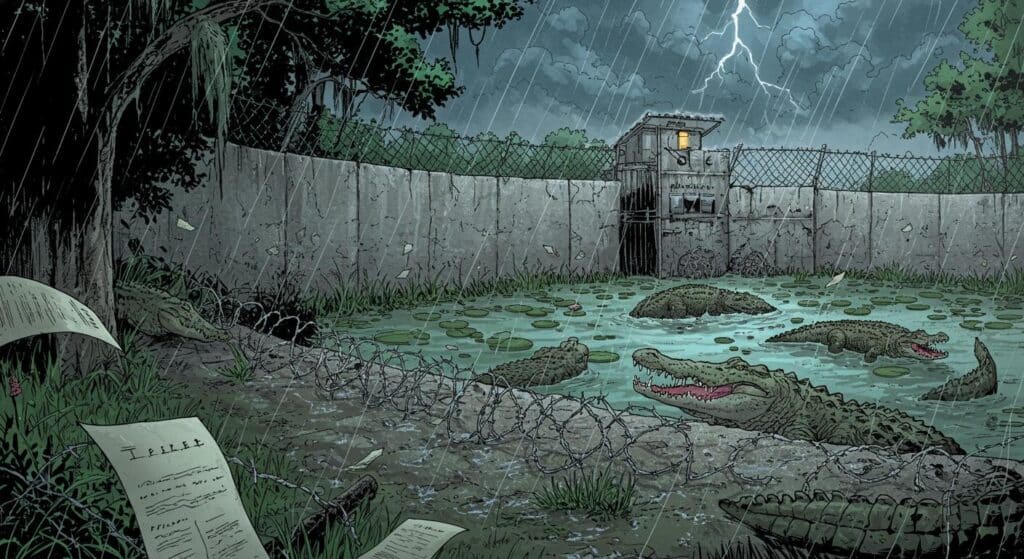If there’s one thing that modern art has reliably proven, it’s that the line between “iconic concept” and “edible afternoon snack” is surprisingly slim—especially when the concept in question is a banana taped to a wall. So perhaps no one should be startled that Maurizio Cattelan’s now-legendary artwork, “Comedian,” has been eaten for what must be the umpteenth time, as CTV News reports.
Banana Déjà Vu
Described in a statement from the Centre-Pompidou Metz, the recent incident unfolded on July 12, when a gallery-goer consumed the banana component of the artwork, which had been on display in eastern France. The gallery highlighted the calm and procedural response of its security staff, noting that the “artwork was reinstalled a few minutes later.” The procedure for such events, apparently, is well practiced—maybe in the same way museum docents know how to gently steer visitors away from touching a Monet, except in this case the temptation is more suited to a lunch break.
According to the Centre-Pompidou Metz, the banana itself is considered “only a perishable element” and is routinely swapped out, strictly following Cattelan’s directions. Among the more peculiar outcomes, the gallery pointed out that the artist was disappointed by the latest eater’s focus on the fruit alone, suggesting that for true completion, one might have attempted the peel and even the tape—though it stops short of recommending it as a serving suggestion.
Interestingly, no police report was filed. Filing charges over a half-eaten installation that is, by all accounts, custom-built to be both temporary and replaceable would perhaps fly in the face of the entire point. What, after all, is theft when the item in question is both ephemeral and renewable by design?
History Repeating Itself—And Repeating Banana Peels
The tale is, at this point, practically tradition. When “Comedian” debuted at Art Basel Miami in 2019, performance artist David Datuna famously removed and ate the banana in front of a crowd, prompting a spectrum of reactions as vivid as the fruit itself. As previously reported by CTV News, this incident didn’t diminish the work’s market appeal—the replacement banana sold for US$120,000, an amount so surreal it nearly matches the concept.
Since then, the banana’s fate has been cyclical (pun perhaps intended): in Seoul, 2023, an art student repeated the edible intervention at the Leeum Museum of Art, further ensuring that “banana consumption” is now firmly part of the artwork’s legacy. And, in a detail noted by CTV News, November 2024 saw Justin Sun—cryptocurrency maven and Chinese collector—purchase “Comedian” at auction for over US$6 million before deciding to eat the banana himself. One can only wonder if he paid with crypto, but the temptation to merge literal and figurative consumption clearly runs strong.
Summing up this ongoing phenomenon, the Centre-Pompidou Metz remarked it is “perhaps the ‘most-eaten’ artwork of the last 30 years,” a title likely uncontested unless someone’s been nibbling on Banksys.
Edible Satire, Irresistible Irony
Amid the headlines and rotating bananas, the satire at the heart of “Comedian” remains refreshingly pointed. Outlined in the gallery’s commentary, the installation serves as a nod to “the absurdity of financial speculation and the fragility of knowledge systems that underpin the art market.” Whether these repeated acts of snack-based rebellion enhance or diminish that message is debatable. But considering Cattelan’s track record—who also installed a solid gold toilet that notably disappeared—one suspects the spectacle is as intentional as the art itself.
In essence, we’re left with a performance on a loop: the banana is hung, the banana is eaten, the banana is replaced, and the conversation is sparked anew. So is the true artwork the perishable produce, or is it the never-ending saga of temptation, consumption, documentation, and collective befuddlement?
If bananas are not built to last, then neither is the straight-faced seriousness of the art market—at least when you can eat the artwork and the story begins all over again. Perhaps, given how frequently knowledge and value are upended in contemporary art, the real lesson is this: come for the existential questions, stay for the snack (or at least the chance to witness someone else’s).
Are the artists and institutions in on the joke, or are we all unintentional performers in an art world comedy where the banana refuses to stay hung for long? One thing’s certain: as long as imagination (and potassium) persist, so too will the world’s most infamous taped fruit, ever-ready to be consumed—again.







